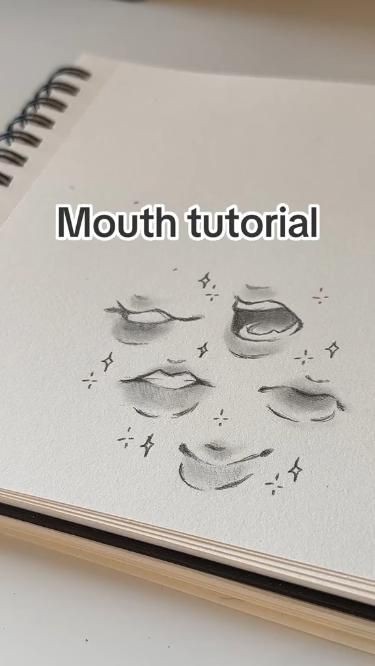Introduction
In the world of art, mastering the portrayal of human features is essential for creating lifelike and expressive characters. Two fundamental aspects that artists often focus on are drawing mouths and developing a comprehensive art tutorial for teaching these techniques. This article aims to provide an in-depth guide on both aspects, offering tips, techniques, and insights for artists of all levels.
Mouth Tutorial: Mastering the Art of Expression
The mouth is a crucial element in conveying emotions and personality in art. Drawing it accurately can enhance the realism and expressiveness of your characters. Here’s a step-by-step guide to help you master drawing mouths.
1. Understanding Anatomy
Before diving into drawing, it’s important to understand the anatomy of the mouth. The mouth is made up of several key components:
Lips: The upper and lower lips form the outer boundary of the mouth.
Teeth: These are often partially visible and play a role in shaping the mouth’s appearance.
Gums: The area where the teeth are anchored, which can affect how the lips and teeth align.
Oral Cavity: The inside of the mouth, which is not always visible but affects the shape of the lips.
2. Basic Structure
Start by sketching a basic outline of the mouth. Draw a horizontal line for the general placement, and then add a curve to represent the lips. Divide the lips into the upper and lower parts, noting that the upper lip is usually thinner and has a more pronounced curve than the lower lip.
3. Adding Details
Lip Contours: Refine the curves of the lips, paying attention to their natural plumpness and shape. The corners of the mouth can vary from slightly turned up to down, depending on the emotion you want to convey.
Teeth and Gums: If visible, add the teeth with careful spacing and alignment. The gums should be subtle but can add to the realism if detailed.
Shading and Highlights: Use shading to give the lips a three-dimensional appearance. Add highlights where light hits the lips, usually along the upper curve.
4. Emotions and Expressions
Different emotions alter the appearance of the mouth:
Smiling: The corners of the mouth turn up, and the lips stretch. The upper lip may reveal more of the teeth.
Frowning: The corners turn down, and the lips may tighten or press together.
Surprised: The mouth opens slightly, showing more of the teeth and gums.
Practice drawing mouths in various expressions to enhance your ability to convey different emotions effectively.
Art Tutorial: Creating Effective Art Tutorials
Creating an art tutorial involves not just demonstrating techniques but also ensuring that learners can grasp and apply the information effectively. Here’s a guide to developing a successful art tutorial.
1. Define the Objective
Begin by clearly defining the objective of your tutorial. What specific skill or technique are you teaching? For example, if your tutorial is about drawing mouths, your objective might be to teach the basic structure, details, and expression techniques.
2. Break Down the Process
Divide the tutorial into manageable steps:
Introduction: Briefly explain what the tutorial will cover.
Materials: List the tools and materials needed.
Step-by-Step Instructions: Provide clear, sequential instructions. Use simple language and avoid jargon to ensure accessibility for beginners.
Examples and Visuals: Include plenty of illustrations or photos to accompany each step. Visual aids help learners understand the process better.
3. Demonstrate and Explain
As you demonstrate each step, explain the rationale behind your techniques. For example, when showing how to shade the lips, describe why certain areas receive more or less shading based on light and form.
4. Encourage Practice
Encourage learners to practice each step on their own. Provide exercises or prompts to help them apply what they’ve learned. For instance, suggest drawing mouths in different expressions or from various angles.
5. Review and Feedback
Offer a section where learners can review their work and compare it to examples. If possible, provide a platform for learners to share their work and receive constructive feedback.
6. Conclusion
Summarize the key points of the tutorial and encourage learners to continue practicing. Offer additional resources or tutorials for further learning.
Conclusion
Mastering the art of drawing mouths and creating effective art tutorials are essential skills for any artist or art educator. By understanding the anatomy of the mouth, practicing various expressions, and developing clear, structured tutorials, you can enhance your artistic abilities and help others improve their skills. Whether you’re drawing a simple smile or creating an elaborate tutorial, these techniques will serve as a solid foundation for your artistic journey.






